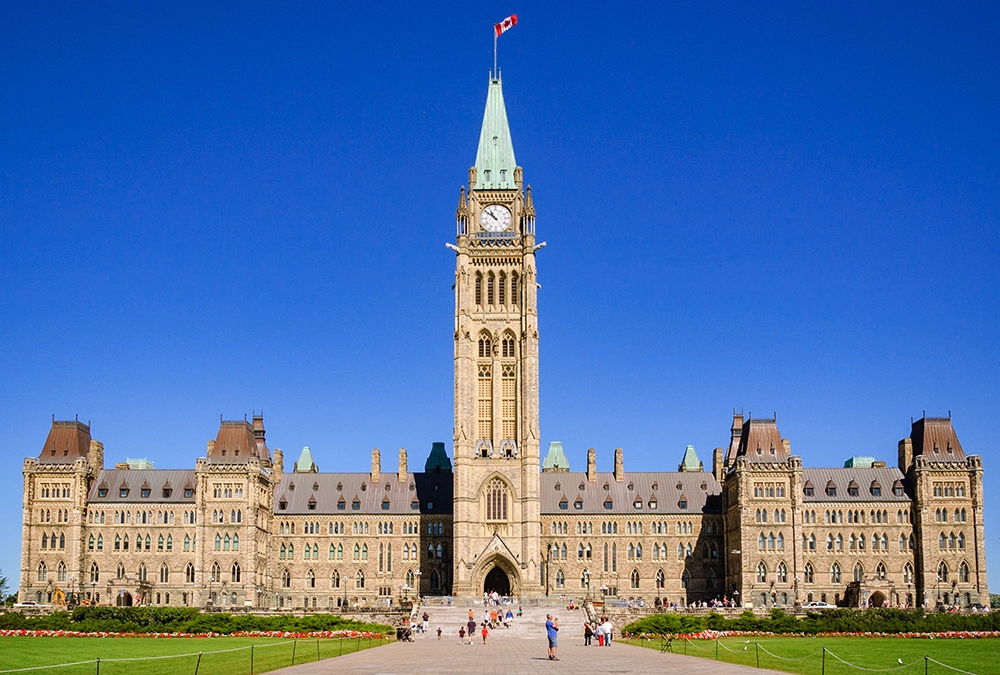
Today marks a pivotal moment for Canada’s assertion of sovereignty and national identity, as His Majesty, King Charles III visits Ottawa. The timing? Far from coincidental. With U.S. President Donald Trump publicly suggesting that Canada could “benefit from becoming the 51st state,” the King’s trip to the Canadian capital is being viewed as a bold and symbolic affirmation of Canadian sovereignty.
Invited by Prime Minister Mark Carney, King Charles III delivered the Speech from the Throne to open the 45th Parliament, becoming the first reigning monarch to do so since Queen Elizabeth II in 1977. It was a moment steeped in constitutional symbolism, reaffirming Canada’s commitment to its parliamentary democracy and distinct constitutional monarchy. The King’s presence comes at a time when many Canadians are feeling increasingly uneasy about the rhetoric spilling over from the south. Trump’s flippant comments about annexation may have been designed to provoke, but the Crown’s dignified response, a visit at the highest level, speaks volumes.
The King's visit holds weight for Indigenous communities across Canada. Long before Confederation, treaties were signed between the Crown and Indigenous Nations, treaties that still stand today. Today, dozens of First Nations Chiefs gathered on Parliament Hill with a clear message. Those being, to respect the treaties and address longstanding issues affecting Indigenous communities. While also calling the federal government to reform the child welfare system, protect traditional lands, and invest in essential infrastructure for Indigenous communities throughout the country. For many Indigenous leaders, including former Assembly of First Nations National Chief Perry Bellegarde, the visit reaffirms the ongoing relationship between the Crown and Indigenous peoples. Governor General Mary Simon, Canada’s first Indigenous head of state, welcomed the King in a powerful display of reconciliation and mutual respect. (While the King’s speech didn’t explicitly mention Indigenous issues, his visit included symbolic engagements with Indigenous communities, through traditional performances and ceremonial rituals. In a sense, these acts aimed to honor the relationship between the Crown and Indigenous peoples, though many leaders stressed the need for these gestures to be accompanied by tangible actions.
King Charles III’s visit has sparked a broader discussion in Canada about national identity, values, and the country’s future direction. While some Canadians view the monarchy as outdated and rooted in colonial history, others see it as a stabilizing, nonpartisan institution that helps distinguish Canada’s political system from that of the United States—particularly amid growing polarization south of the border. The visit has prompted reflection not just in political circles, but among the public and media as well. Political leaders across party lines have spoken out in support of Canada’s autonomy, with many acknowledging that the King’s presence highlights the unique role the Crown continues to play in the country’s constitutional framework. Even those critical of the monarchy recognize that the timing of this visit, especially following comments from President Trump about Canada becoming the 51st state, reinforces Canada’s sovereignty.
Reactions to the visit have varied. For some, it underscores the importance of maintaining strong, independent democratic institutions. For others, it serves as an opportunity to reevaluate the monarchy’s role in Canada’s future. Although Trump has previously expressed admiration for the royal family, it’s likely he’ll interpret the King’s visit as a diplomatic pushback. While the monarchy does not engage in partisan politics, the symbolism of a Canadian welcome for the King shortly after controversial remarks from a U.S. president is difficult to overlook. Trump may try to dismiss or reframe the visit, but the timing and tone of the King’s engagement send a clear message about Canadian independence.
This visit is more than a formal appearance, but a reminder for Canadians to consider where the country stands in the world, how it defines itself, and how it balances its history with its aspirations. As conversations on Canadas future continue, this visit may be seen as a moment that reinforced the country’s sense of identity.